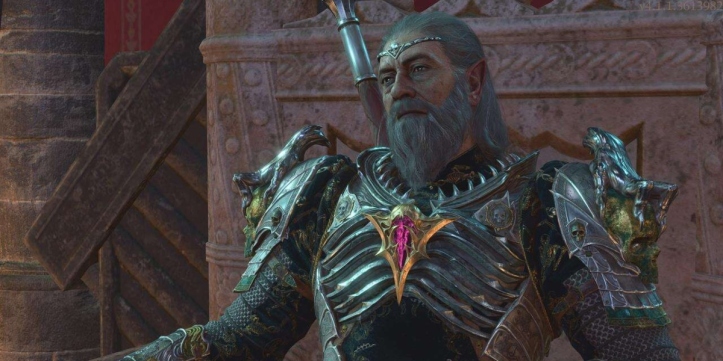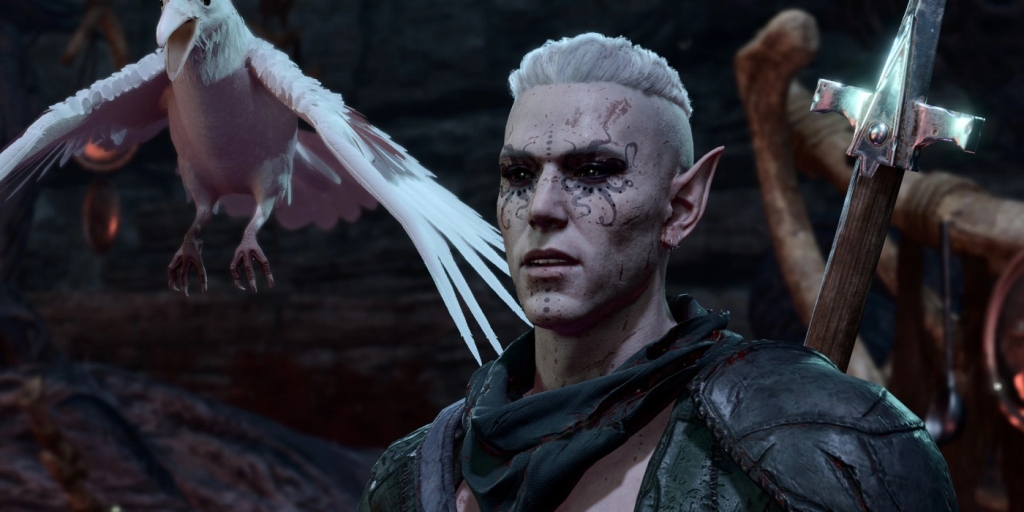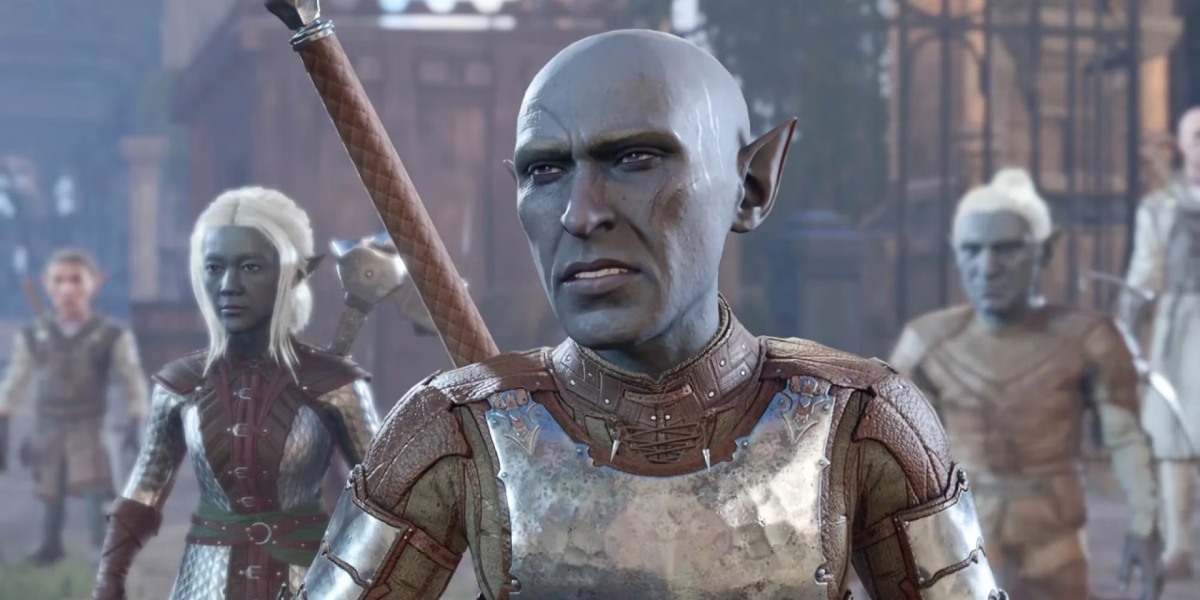Baldur’s Gate 3 has been a smash success ever since its release. The early explosion in popularity has stabilised into long-lasting love and admiration from almost every sector of the gaming industry.
One of Baldur’s Gate 3‘s greatest strengths is its NPC characterisation. Even besides its iconic origin characters, the game’s world is full of people who are memorable and well-loved many months after release.
Many of Baldur’s Gate 3‘s best NPCs owe their popularity to well-worn tropes D&D 5e DMs can take inspiration from. Although they are nuanced and fleshed-out, specific traits help make them as iconic as they are.
Copying NPCs wholesale is ill-advised, not least because many D&D 5e players have devoured Baldur’s Gate 3 by this point. However, DMs looking to make memorable D&D 5e NPCs can take the very solid traits at their core and use them in their own work.
Spoiler Warning: This article discusses events in all three acts of Baldur’s Gate 3. If you’ve somehow gotten this far unspoiled, please read with caution.
Auntie Ethel’s Melodramatic, Irrelevant Evil

Auntie Ethel is one of Baldur’s Gate 3‘s most beloved villains. This is despite her being entirely irrelevant to the plot. Aside from being in the area and possibly lending aid in the final battle, she has no bearing on the Absolute’s machinations.
This actually leads to one of her biggest strengths: Her cartoonish, unrepentant evil.
If Auntie Ethel were one of Baldur’s Gate 3‘s main villains, she would need nuance, depth, and maybe even some humanising features. Her brand of hilarious villainy doesn’t hold water as the lynchpin of an entire plot. Even Orin the Red has significantly more depth.
However, because she’s the antagonist of two Baldur’s Gate 3 side quests, Ethel gets to be as melodramatic and vile as she wants.
From kidnapping pregnant women to eating children to crude threats and personalised insults for each party member, Auntie Ethel has everything she needs to be one-dimensionally vicious and one of the most memorable villains in the entire game.
Not every session of your D&D 5e campaign has to be directly related to your overarching narrative (if there even is one). For a break from your plot, consider making a memorable D&D 5e NPC who has shades of Ethel’s sheer awful nature.
You can’t create a sympathetic and fleshed-out villain in D&D 5e with Ethel’s evil, but you don’t need one for every adventure. Your players are likely to look back fondly on their session against a moustache-wearing, unrepentant villain who makes pointedly cutting remarks about their favourite gods.
Dammon’s Kindness and Genuine Value

Many of the Tieflings in Baldur’s Gate 3 have become popular characters. They’re some of the few to appear in every act (unless you make some horrible choices) and grow alongside the player characters.
However, few stand out quite as much as Dammon, the Tiefling blacksmith. He stands out even among other well-liked Baldur’s Gate 3 Tiefling NPCs like Rolan and Alfira.
Part of this comes from his genuine value to the players. He’s a consistent vendor they can make friends with early on, and eventually sells some of Baldur’s Gate 3‘s best loot.
It’s an undeniable way to make a D&D 5e NPC well-liked. If they have something useful to offer to the party (be it goods or services), the players are far more likely to remember and like them. It’s very transactional, but what can you do?
However, the average D&D 5e campaign is going to have countless vendors, much like Baldur’s Gate 3 itself does. Dammon’s genuine appreciation from the fanbase comes from going above and beyond the role of mere seller.
Dammon is one of the single kindest people in Baldur’s Gate 3. He goes out of his way to help the party when he can and is a vital part of Karlach’s sidequest. He’s also genuinely likable to talk to, lacking the edge that many of his fellow Tieflings have.
It’s Dammon’s mixture of kindness, connection, and genuine value that makes him so beloved among Baldur’s Gate 3 NPCs.
If you want a similar D&D 5e NPC who can serve as a friend and confidant, give the players a reason to use that character’s services time and time again. Give them something unique and a warm disposition (ideally don’t make them a total doormat) and let human nature do the rest.
Ketheric Thorm’s Immense Relevance Before Appearing

Making memorable and long-lasting D&D 5e villains is a challenge for many DMs. This isn’t least because players have a habit of killing them when they first appear (or dying trying).
Ketheric Thorm is widely agreed to be the best main villain in Baldur’s Gate 3, well above his fellow Chosen, Orin and (handsome, younger man) Enver Gortash.
If you’re a DM hoping to make a D&D 5e NPC (it doesn’t even have to be a villain) stick out to players, start by laying the groundwork well ahead of when they appear.
Yes, this does take significant effort (not least because it requires the average D&D group to remember things). Yes, it does require the DM to plan things well ahead of time and not just wing it. But the rewards are well worth it.
Baldur’s Gate 3 players hear of Ketheric Thorm well before seeing him in Moonrise Towers. His presence looms large over the Shadow-Cursed Lands, an entire act unto themselves.
Ketheric Thorm ties into Halsin’s backstory in Baldur’s Gate 3. Respected information sources like Jaheira discuss his power and threat. Environmental storytelling describes his unstoppable presence and vicious reign over Reithwin and the surrounding areas.
All of this builds up an impressive image of Ketheric Thorm in players’ heads before they meet him. And then they do, and he more than lives up to it in one of Baldur’s Gate 3‘s best cutscenes.
DMs should do the same with significant D&D 5e NPCs. It does require some moderation. If all the players hear is how awesome and terrifying a character is before they meet them, they’re likely to be more exasperated than intrigued.
Take your time. Weave it into the world and the characters in it. Give this memorable D&D 5e NPC a reputation that exists but isn’t omnipresent. And then throw them into the mix and see how your party respond.
He Who Was’s Sheer Inexplicability

Auntie Ethel isn’t the only irrelevant NPC who has captured the imagination of the Baldur’s Gate 3 fanbase. He Who Was is a Shadar-Kai found on one of the very edges of Act 2’s map.
He Who Was is unrelated to Act 2’s wider plot (besides having a fixation on one local NPC). He’s slightly hard to find, a quest-giver, and a potential optional fight.
He’s also, in a single word, weird.
He Who Was shows a fixation for vengeance that borders on the sensual. His Baldur’s Gate 3 questline involves finding evidence of a deceased NPC’s crimes so he can force you to put her on trial. All the while, he’s practically dribbling.
He appears out of nowhere with a raven and a strange name, moans over tormenting a deceased NPC, refuses to elaborate, and leaves (or fights you to the death).
Despite the plot-irrelevant nature of He Who Was’s Baldur’s Gate 3 side quest, he’s developed a genuine fandom in his own right. This is because the sheer strangeness of the events surrounding him lingers in the mind long after he leaves.
Most DMs don’t mind making things weird from time to time. One great tip for making a memorable D&D 5e NPC, whether they’re relevant or not, is to make them flat-out odd.
You don’t need to plumb the same quasi-erotic depths as He Who Was does in Baldur’s Gate 3. Perhaps your weird, one-off NPC settles for being unnerving, haunting, or flat-out unexplainable.
Nonetheless, you can do good business with a D&D 5e who makes players go “…What the heck was that?” months later.
Wulbren Bongle’s Unrelenting Unpleasantness

I feel the need to pre-emptively defend myself. Wulbren Bongle in Baldur’s Gate 3 is a horrible person and a jerk. However, that’s not the same thing as being a bad character.
I view a well-made D&D 5e NPC as one who provokes a strong emotional reaction in players and one whom they enjoy feeling that particular way about. This applies as much to contempt as it does admiration or affection.
By that metric, Wulbren Bongle truly is one of Baldur’s Gate 3‘s best NPCs. Few characters have united the fanbase as one in sheer, utter hatred. Nobody who has played Baldur’s Gate 3 has a pleasant thing to say about Wulbren Bongle.
Wulbren is short-sighted, two-faced, and prejudiced. He cares little for other’s lives and prepares to slaughter the imprisoned Gondians after the player has risked literally everything to keep them alive.
Worst of all, he’s rude to Barcus Wroot.
One tip to make a memorable D&D 5e is to just make them the worst person you can think of. Not in a grand, take-over-the-world sort of way. But in a petty, tips-four-percent sort of way.
Lean into real-world unpleasant behaviours like rudeness, snobbishness, ingratitude, and even bigotry (as long as your players are okay with that at the table).
Few things make for a memorable D&D 5e NPC like seething contempt, and Wulbren Bongle is a fantastic example of how DMs can weaponise that. No other NPC has a meme rap diss track about them (as far as I’m aware).
But, importantly, give your party a chance to ultimately get one over the hateful NPC and grind them into the dust, even if it’s not a physical confrontation. Your players will enjoy it immensely.
These have been five tips DMs can take from Baldur’s Gate 3 for making particularly memorable D&D 5e NPCs. A bit of copying is harmless, but do try and throw some more original tropes in as well.
For more general DMing advice from the game, check out ‘Five Things D&D 5e DMs Can Learn From Baldur’s Gate 3‘.
To avoid accidentally living up to the last tip in real life, ‘Five Well-Meaning D&D 5e Problem Behaviours‘ contains advice for behaving well at the D&D table.
Please do like this article and check out some of my other content on Artificial Twenty! If you could share or comment, I’d really appreciate it. Thanks!